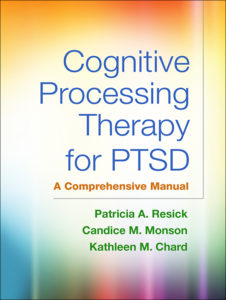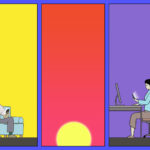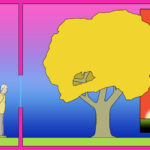At essence, Cognitive Processing Therapy, CPT, is a way to use one’s own heart and mind to help reduce the impact on one’s brain of having experienced trauma. Designed to be a brief protocol, CPT has over 25 years of research to back it and is recommended by the Veterans Administration and the American Psychological Association (APA).
 I experienced such significant trauma symptom reduction myself from being taken through the protocol by clinical psychologist Stephanie Fearer, Ph.D., that I trained in providing the CPT protocol so I could pass this relief forward to others. I provided individual and group sessions in CPT in my private practice’s counseling office until March, 2020. Since then, we have been conducting individual and group CPT sessions online.
I experienced such significant trauma symptom reduction myself from being taken through the protocol by clinical psychologist Stephanie Fearer, Ph.D., that I trained in providing the CPT protocol so I could pass this relief forward to others. I provided individual and group sessions in CPT in my private practice’s counseling office until March, 2020. Since then, we have been conducting individual and group CPT sessions online.
Numerous research studies report the effectiveness of online vs. in-person counseling, including for CPT.
The CPT protocol includes 12 sessions. These can be scheduled weekly, twice weekly, or at other intervals. In this case study, a person received 10 sessions of Cognitive Processing Therapy delivered twice per day over a single, five-day work week.
The first 7 sessions are fundamental and the last 5 offer deeper insights. Some people experience noteworthy symptom reduction in a few sessions – “early responders” – and complete the protocol in fewer than 12 sessions.
Participants complete assessments prior to each session and plot them on a graph to track their progress. They complete daily homework between sessions.
Some people want to take their time and experience the comprehensive experience of the full protocol. Others, because of time and cost limitations, want to be early responders. In my professional experience, all who engage in CPT for any length of time are brave. Early responders tend to be those who 1) do the homework daily (not intermittently or all at once), and 2) do it thoroughly. In addition, women who identify as female and for whom attendance of our online CPT group is a fit may also respond quickly to the protocol.
The primary logistics challenge for conducting and participating in online CPT is distributing and using the handouts. When I had an office, I created a folder for each client and arranged a sequence of handouts in folders as if in a buffet line. Clients arrived, completed assessments, acquired the session’s handouts, and we were ready to begin in about 3 minutes.
Online, I have used a website page as a virtual table and made an ordered list of the materials participants need and the actions to take prior to each session. The give-and-take of quick questions that happens while seated in-person, side-by-side at a table doesn’t really happen in online sessions when one is, virtually, inches away from the other person’s face. There’s a focus and seriousness to it that, again in my opinion, might actually improve outcomes. That is hypothesis, not data. I’ve made a CPT glossary that covers the questions I was most often asked about terms and concepts.
Although a self-guided workbook is being developed, I encourage people to buy a copy of the CPT manual. I kept an in-house copy of the manual in my office so clients could follow along during each session. This was more efficient than attempting to page through copies of handouts in a folder or notebook.
If you’ve read this far, then you’ve answered the first question.
Is online Cognitive Processing Therapy (CPT) a fit for me?
1. Am I open to reading short passages of explanatory text at about the reading level of the text in this post?
2. Am I open to reading and following lists of directions primarily on my own and asking clarifying questions if I’m having trouble?
3. Am I open to doing daily homework? After the first homework assignment, which takes an hour, am I open to doing homework each day, maybe 20-30 minutes per day?
4. Am I aware that the primary symptom of trauma disorders is clinically – and somewhat uncharitably – termed “avoidance” but is my attempt to protect myself from emotional pain?
5. Am I aware that, paradoxically, the primary symptom of trauma disorders – avoidance – is the one that may get in the way of me getting help for it? If I do get help, am I aware I will, understandably, lean toward canceling sessions and not doing homework and lean away from attending appointments and doing homework? That I may find myself wanting to quit attending sessions at all?
6. Am I aware that a secret, fearful belief I have is that, if I engage in counseling for trauma, all my defenses and adaptations will shatter and I will be so raw and vulnerable that I will be unable to function?
7. Given all this, am I open to taking a chance on the protocol for about 20-30 minutes per day for up to 12 sessions, knowing I, truly, can stop at any time and use the manual on my own?
The start of any counseling process for any condition begins with self-kindness. Having questions and concerns like these makes complete sense. People who have trauma symptoms suffer. People who have been diagnosed with post-traumatic stress disorder (PTSD) have a condition considered a severe mental illness (SMI) for which they qualify to apply for disability benefits. This is serious business and deserves our attention and care.
If you are a Virginia resident and would like to consider Cognitive Processing Therapy facilitated by a counselor, please fill out this contact form. (If you are not a resident of Virginia, here is a roster of other CPT providers.)
I will use your email address to send you the CPT contract and the .pdf of CPT worksheets for your review. If you decide you would like to engage in the protocol, I’ll send you further enrollment information and we’ll schedule a meeting to answer any questions you may have. When we meet, we’ll schedule a set of 12 appointments together. Then we’ll begin.
If you would like to consider engaging in CPT on your own, Self-Help Guide to Reducing Trauma Symptoms may be of assistance.
With any questions at all, please do contact me.
This content is for informational purposes only and is not a substitute for medical or professional advice. Consult a qualified health care professional for personalized medical and professional advice.
 Look at the permutations of thoughts that can arise from the “I am bad”/”I do badly”/just-world belief scenario:
Look at the permutations of thoughts that can arise from the “I am bad”/”I do badly”/just-world belief scenario: Although I learned in 2016 that
Although I learned in 2016 that 
